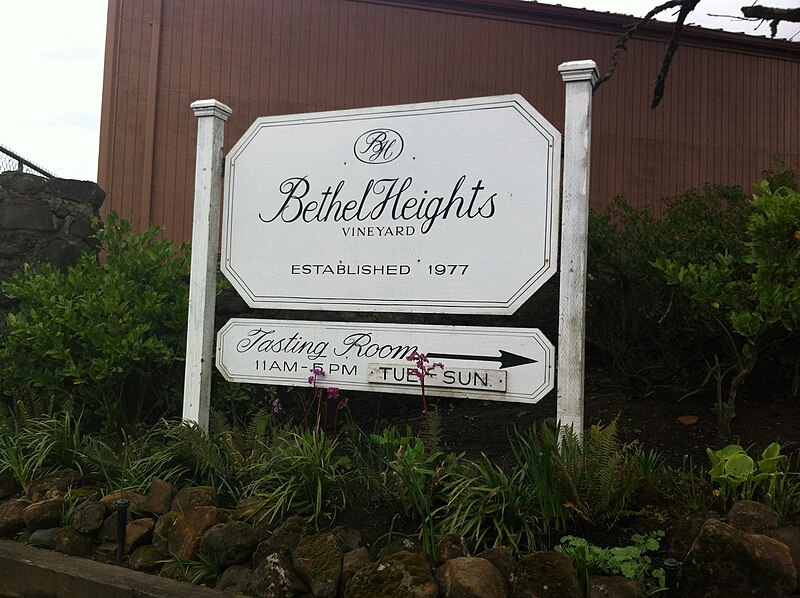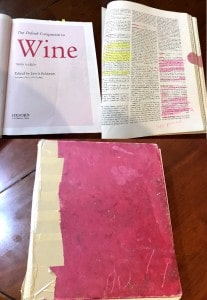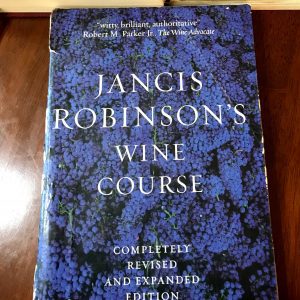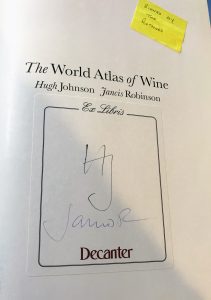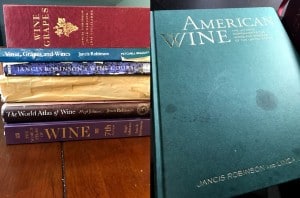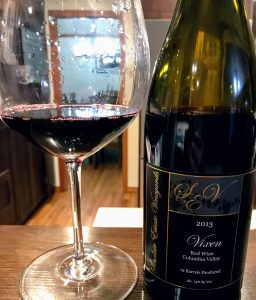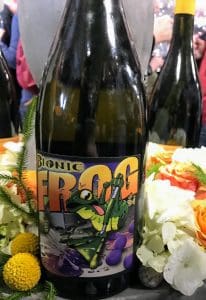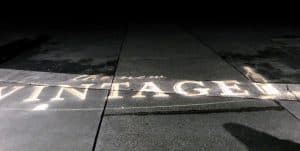 After many years of only attending the Grand Tasting of Taste Washington, I decided to participate in some of the other events going on during Taste Washington weekend–the seminars and The New Vintage party.
After many years of only attending the Grand Tasting of Taste Washington, I decided to participate in some of the other events going on during Taste Washington weekend–the seminars and The New Vintage party.
While the Washington vs The World seminar was awesome, the New Vintage party was….less than stellar.
Is it a party, a tasting or a cattle call?
On the Taste Washington website, they describe The New Vintage at Fisher Pavillon ($80 a ticket) as an event to “See and be seen at this stylish soirée. Sample exquisite Washington wine and even discover new favorites as you chat with celebrity chefs and chow down on gourmet bites. Grab your closest friends and dance the night away, but don’t forget to pay a visit to the popular Rosé Lounge for a tasty glass of pink before the evening ends.”
In reality, it was an event to bump and be bumped into by other people as you try to make your way through the sea of humanity to a table to get a sample of wine or food. In many ways, it felt like a more scaled down version of the Taste Washington Grand Tasting. But instead of having the spacious CenturyLink event center, you had this large crowd of folks squeezed into a smaller event space at Fisher Pavilion.
Most of the strategies I talked about for dealing with the crowds at the Grand Tasting didn’t apply to The New Vintage because of how difficult it was to move around. Even if there was an empty table somewhere (which, with about a 1/5th of the wineries and restaurants compared to the Grand Tasting, wasn’t likely) you still had to literally fight, slip, slide, sneak, ope, excuse me, pardon, sorry your way to that table.
To give you a feel of the environment, this was a 30 second video I took about an hour into the event trying to move past the music stage and get to the Rosé Lounge. Note that my short 5’3 self is juggling my phone, wine glass and event brochure while trying to film this.
Good luck trying to “chat” with celebrity chefs as they were busy working their tails off to keep a steady stream of food going for the crowds. Ditto with winemakers but that is usually par for the course with these types of tastings as people always want to monopolize winemakers’ time.
Truthfully, the only people that were easy to talk to were the lonely guys at Voya Financial who were somewhat conveniently located by the stage. Before the music started, that was the only table in the event that didn’t have a mass of people in front of it.
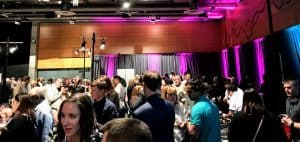
This picture was taken just after the video where I had a clearing to raise my arms up and capture a better crowd shot.
The Rosé Lounge I was working towards is ahead in the corner.
And dancing? Ha! Maybe we could’ve gotten some mosh-pit action going on at best–though really the music provided by the synth pop duo Man Made Time wasn’t of the “moshing” vibe. Plus, where were you going to put your wine glasses while dancing?
The Positives
Just like at the Grand Tasting, there was good wine and good food to be discovered at The New Vintage. Below I list some of my favorite wines but among the food, I was blown away by the pork rillettes made by Brooke Williamson of the Hudson House on Redondo Beach. Compared to the Grand Tasting of Taste Washington which focuses on local restaurants, I appreciated that The New Vintage gave us a chance to try something new from this LA area chef.
The music was actually great. I never heard of Man Made Time before but their singer, Hillary Grace, has a gorgeous voice.
I also loved the concept of a “Rosé Lounge” (though, in reality, it was actually more of just a Rosé Table with only sparse seating nearby). I fought my way through the crowds several times to use that table as a palate cleanser and ended up finding several of my favorite wines of the evening. With Taste Washington weekend usually happening close to the beginning of Spring, having a prominent Rosé featuring event is a great idea and one that I would love to see expanded.
My Top 5 Wines from the Event
Even with the frustration and cattle call atmosphere, I still had a chance to discover some great wines. Here were are my 5 favorites.
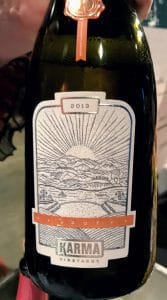
Fantastic bubbles! And unlike the guy who was working the Domaine Ste Michelle booth, yelling for people to try his “champagne”, the folks at Karma where very professional and knowledgeable about their product.
1.) 2013 Karma Brut sparkling wine — Everytime I taste Karma’s bubbles, I become more and more impressed. They have long passed Argyle as the Northwest’s best sparkling wine producer and are giving Schramsberg in California a run for their money as the best in the United States. A blend of 49% Chardonnay, 48% Pinot noir and 3% Pinot Meunier, this vintage sparker spent 48 months aging on its lees, creating beautiful depth of toasted spice pear with a creamy, silky mousse. Truly a gem out in Lake Chelan.
2.) 2017 WIT Cellars Rosé — A blend of Tempranillo and Sangiovese that I believe was made in a saignée style. Lots of red wine character with strawberry and raspberry but bone dry with a long minerally finish. Impeccably made and well worth hunting for.
3.) 2017 Amelia Wynn Albarino — Beautiful high intensity aromatics of citrus and tropical fruit that I could smell as soon as it was poured into the glass. Very full-bodied for a white but with ample acidity and crispness. They also featured a Tempranillo rosé at the Rosé Lounge that was going toe to toe with WIT Cellars for the rosé of the night.
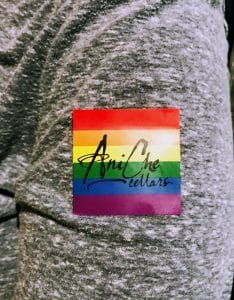
I also dug the schwag stickers from AniChe.
4.) 2017 AniChe Cellars Bombadil — a white Rhone blend of Grenache blanc, Picpoul and Viognier sourced from the Boushey vineyard in the Yakima Valley. Anyone who read my review of Gramercy’s Picpoul could probably guess how excited I was to hear about this blend–and sure enough it delivered. A lot more weighty than a varietal Picpoul with the dominant Grenache blanc and Viognier, this wine had a silky mouthfeel of apples and lemon custard. Great summertime white to pair with heartier cuisine.
5.) 2014 Gard Vaucluse — A very savory Rhone blend of 68% Syrah, 29% Grenache and 3% Viognier that had a mix of juicy blue fruit, floral and spice notes. This table was on the opposite corner of the Rosé Lounge and after tasting this huge wine I wanted to give my palate a break with some rosé. It took me over 10 minutes to navigate through the crowds to get to the other side of the room and I was still tasting this wine.
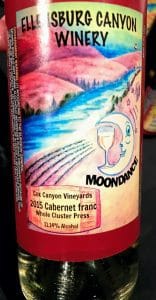
A white Cab Franc!
Honorable mention for the most geeky wine I tried at the event–2015 Ellensburg Canyon Winery White Cabernet Franc — Yes! A white Cab Franc! Sourced from Cox Canyon Vineyards, the grapes were whole cluster pressed right after harvest to produce this white wine. While it didn’t have all the evocative aromatics of red Washington Cabernet Francs that I adore so much, it was still a tasty white wine that I applaud Ellensburg Canyon Winery for trying their hand with. It reminded me of a more weighty and textured Italian Pinot grigio.
Another honorable mention to Ducleaux Cellars who featured several wines that impressed me–their One Night Stand rosé, Jordyn white Rhone blend and Anarchy red. The only reason they didn’t make my top 5 is because I honestly couldn’t figure out which of the three that I liked the best. Ducleaux, AniChe, WIT Cellars and Amelia Wynn were first time tastes for me and all four are wineries that I’m eagerly looking forward to discovering more about.
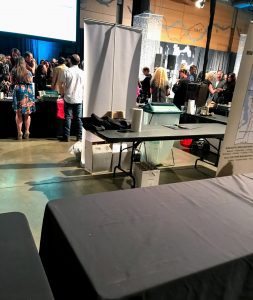
One of the empty winery tables that had already packed up and left by 9:17pm — with more than 40 minutes left in the event. But also look at all that space in the center. A better layout would have minimized the “moshing” and cattle call feel of the event.
Ways to Improve The New Vintage for Next Year
The first thing the event organizers need to do is nail down exactly what they want this event to be and then tailor the event space to serve that purpose. If they want it to be a party vibe with dancing and socializing then they need to move the tasting tables to the perimeter and leave a large clearing in the center for people to dance, mingle and socialize.
The organizers also need to make the hard decision of either A.) selling less tickets or B.) renting a bigger space.
Personally, I vote for selling less tickets as one of the other frustrating narratives of the night was how many food and winery tables closed up early because they ran out of stuff. It was a sad irony that by the time the crowds started to wane (around 9:20pm), and you could actually maneuver around more and hit the tables you missed, was when most of those tables were done for the night. One table I regret missing was the St. Germain/Trevari sparkling cocktail table. Located right near the entrance it was always swamped by people and I was hoping to have that cocktail be my nightcap before switching to water.
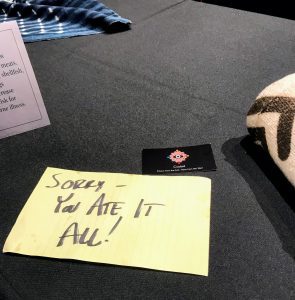
Pretty emblematic of the whole event. This photo of one of the restaurant tables was taken at 9:09 pm with almost an hour left to go.
As I mentioned above, it would also be nice if the organizers developed and expand the Rosé Lounge concept. It would be awesome to see it made into a true lounge setting that was roped off or somehow separate from the rest of the tasting with more seating and its own food pairing tables. This would offer a fantastic opportunity to truly explore the diversity of Washington State rosé–especially if they had separate tables within the lounge dedicated to different styles of rosés like the ones that Master of Wine Jennifer Simonetti-Bryan highlights in her book Rosé Wine–Blush, Crisp, Fruity and Rich.
I’ll keep an open mind for next year’s Taste Washington weekend and see if I hear about any changes to the format or venue for The New Vintage. But at this point I would say the event is certainly not worth the $80 to attend. Instead I would rather spend the extra $15 to get a general admission pass to one of the Taste Washington Grand Tasting days where you’ll have 5x as many food and wine options and a heck of a lot more room to enjoy the event.
Yes, there will always be crowds at the Grand Tasting but at least that event never felt like a cattle call.



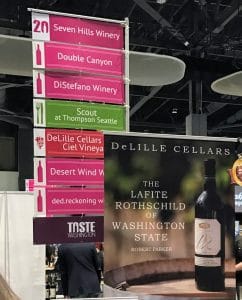 The
The 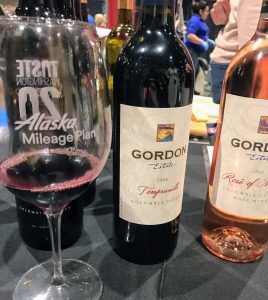
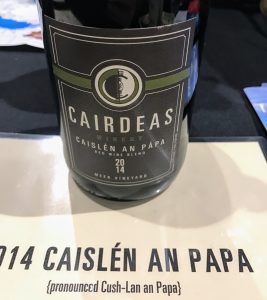
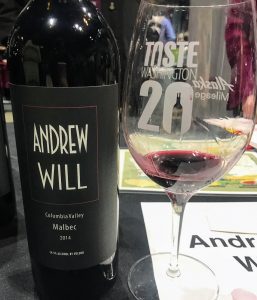
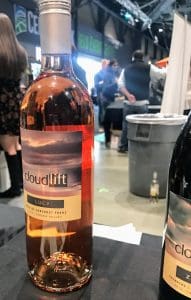

 A few thoughts on
A few thoughts on 



